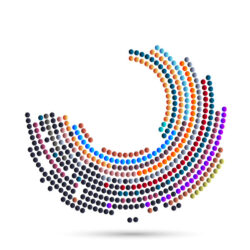The Definitive Guide for K-12 Classroom Device Deployment
Chapter 2: Equity in Student Access
 When school districts talk about equity and access, they often break that into different buckets:
When school districts talk about equity and access, they often break that into different buckets:
• Access to devices and digital programs
• Access to high quality instructional materials
• Access to effective educators with knowledge of digital strategies
• Access to conducive learning environments
• Access to the Internet
“We must merge our traditional sense of schooling with the real world.”
-Sigmund Boloz
Access to Digital Devices and Programs
Many people ask, “Why do all students need devices, can’t they share?” My answer is, “Students need access to devices when it is the best instructional tool for the learning outcome.” If that student is in need of accessing an app, program, or the internet to successfully achieve the learning outcome, why should they have to wait until tomorrow when it is their turn?
With that in mind, the current state of virtual learning has required districts to critically analyze their device inventory and provide students digital devices and curriculum so learning can occur anywhere.
“Students need access to devices when it is the best instructional tool for the learning outcome.”
-Beth Clarke – Senior Director of Digital Leadership and Learning
Access to High-Quality Instructional Materials
Students are eager to learn when the content is relevant and authentic. That said, your curriculum should reflect your students’ cultures and experiences. High-quality instructional materials also need to be driven by standards for career, college and community readiness. The rigor and high expectations for each student will provide personalized access to learning outcomes.
The instructional materials should be accessible in multiple formats (paper, digital) with multiple points of access. If a student is learning in a virtual environment, access to the content will be organized on a digital platform with clarity and structure. Within that structure, students will engage in the content multiple ways, utilizing their choice with an opportunity to express what they know and understand.
 Access to Effective Educators with Knowledge of Digital Strategies
Access to Effective Educators with Knowledge of Digital Strategies
This is a tricky one because as we know, there is variability in teachers as there is in our students. Even so, professional learning must include digital strategies and tools to effectively teach our learners of today. Digital learning is what learning is today. We only call it out because some folks are still working on integrating the digital part. A silver-lining to the 2020 pandemic is that educators were accelerated into the virtual world and are now integrating digital practices into all learning environments; face-to-face, hybrid, and virtual. Our students deserve to learn with educators that have modern pedagogy to support their needs.
“The students of the future will demand the learning support that is appropriate for their context … and they want it at the moment the need arises. Not sooner, not later. Mobile devices will be a key technology to providing that learning support.”
-Dr. Marcus Specht, Director, LDE Centre for Education & Learning, Netherlands
 Access to Conducive Learning Environments
Access to Conducive Learning Environments
 All students are different. It is critical for educators to provide an environment with flexibility and variety so students have choice in their physical learning environment.
All students are different. It is critical for educators to provide an environment with flexibility and variety so students have choice in their physical learning environment.
Virtual spaces, such as a video conference, must also include choice. Video on or video off, it is a choice for the learner to make as they engage in learning activities.
Access to the Internet
Access to the internet in our schools is a done deal, but opportunities for internet access looks different for each family. School districts can bridge opportunities to access the internet by:
• Providing hotspots to families of need
• Equipping busses with hotspots
• Connecting low cost internet programs to families
• Contact local businesses to build a network
of internet friendly locations

 Access to Effective Educators with Knowledge of Digital Strategies
Access to Effective Educators with Knowledge of Digital Strategies Access to Conducive Learning Environments
Access to Conducive Learning Environments